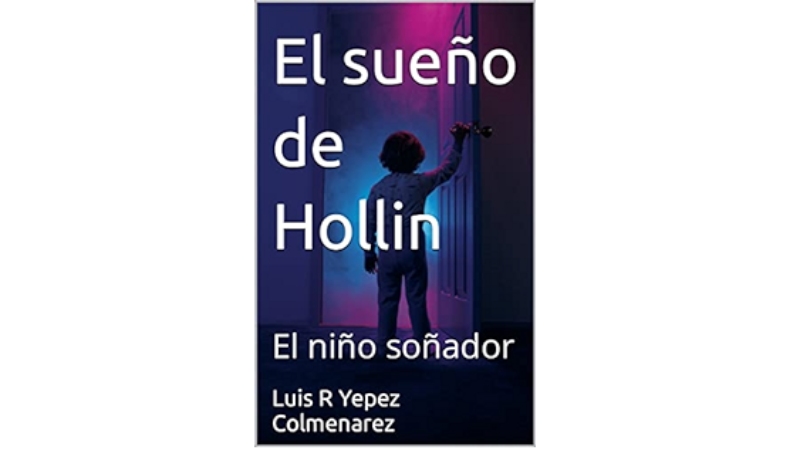Book
The Symbolism of Fire and Light – Exploring the Metaphors of El Sueño de Hollín

Symbols play a vital role in storytelling. They serve as the primary catalyst of the show, not tell. Consequently, authors and historians have leveraged symbols to convey timeless messages throughout the ages.
Even today, mentors, parents, and writers use symbolism to teach kids much-needed lessons. In light of the significance of symbolism, author Luis Rafael Yépez Colmenárez uses symbolism to maximize the impact of his book El Sueño de Hollín.
The author references multiple natural elements while signifying the book’s characters, messages, and lessons. For critical readers, this book can be a treasure trove of lessons; for aspiring writers, this book is a guide to utilizing symbolism.
Fire as a Catalyst for Transformation
Through the ages, storytellers used fire as a symbol to grab attention. An all-consuming monster, a personification of determination, or an encouraging character, fire represented these and many more. Thus making it a very versatile symbol for creative writing.
The author uses fire to teach our main character; therefore, Hollín encounters fire in many ways. From the flames in control of ‘Vulcano’ to the incandescent light in the night sky, each leaves an indelible mark on the main character.
Light as Illumination and Revelation
Light is the beacon of hope in all modern and ancient media. It is towards the light that one finds the right path. Whether you see a silhouette of good or the shadow of evil, behind them is the light of their aura. In contrast, light is the method to conceal any end goal or objective, thus leaving a vague image in the reader’s mind.
The author uses light throughout the narrative to symbolize power, illumination, and revelation. For example, the radiant stars in the night sky, the incandescent light, and the radiant temple. All these represent moments of learning and discovery. These representations of light are written as if ‘Hollín’ is getting closer to his goal.
Sharing Messages Through Symbolism
Every book has a message; some just lay it out for the readers, while others drive them to conclusions. The interactive method of making the reader conclude a lesson is only achievable through symbolism. Through metaphors or subtle hints, authors use symbols to line up clues for the readers. Thus making the books more creative and inclusive of the reader.
Through these effective practices, Rafael’s symbolism is on point to achieve the goal of intriguing the reader. She guides readers toward growth, progress, and transformation. Even the main characters, ‘Hollín’ and ‘Vulcano,’ are symbolic names for resilience and power. They encourage the readers to trust their intuition while applying their lessons.
Conclusion
In El Sueño de Hollín, the author Luis Rafael Yépez Colmenárez masterfully uses symbols to empower the narrative. Fire and light are just two examples in the forefront, but there are many more.
The metaphors of this enchanting tale represent the author’s mastery of human emotions. This book vividly portrays human experiences while using fire and light as metaphors for learning and discovery. This tale invites readers to reflect on their lives and take a leap of faith in themselves, just like ‘Hollín.’
Want to experience how symbolism guides ‘Hollín’ and ‘Vulcano’ on their journey? The chance is within your grasp. Click the link and book your copy of El Sueño de Hollín. A binge-worthy narrative awaits your attention.
-

 Sports4 weeks ago
Sports4 weeks agoAl Ahly vs Inter Miami, 2025 FIFA Club World Cup – Preview, Prediction, Predicted Lineups and How to Watch
-
Health3 weeks ago
Back to Roots: Ayurveda Offers Natural Cure for Common Hair Woes
-

 Tech3 weeks ago
Tech3 weeks agoFrom Soil to Silicon: The Rise of Agriculture AI and Drone Innovations in 2025
-

 Startup4 weeks ago
Startup4 weeks agoHow Instagram Is Driving Global Social Media Marketing Trends
-

 Sports3 weeks ago
Sports3 weeks agoFIBA 3×3 World Cup 2025: Full Schedule, Preview, and How to Watch
-

 Science4 days ago
Science4 days agoJuly Full Moon 2025: Everything You Should Need to Know, When and Where to See Buck Moon
-

 Gadget3 weeks ago
Gadget3 weeks agoThings to Know about Samsung Galaxy S26: What’s New and What’s Next
-

 Sports4 weeks ago
Sports4 weeks agoWorld Judo Championships 2025: Full Schedule, Date, Time, Key Athletes and How to Watch























